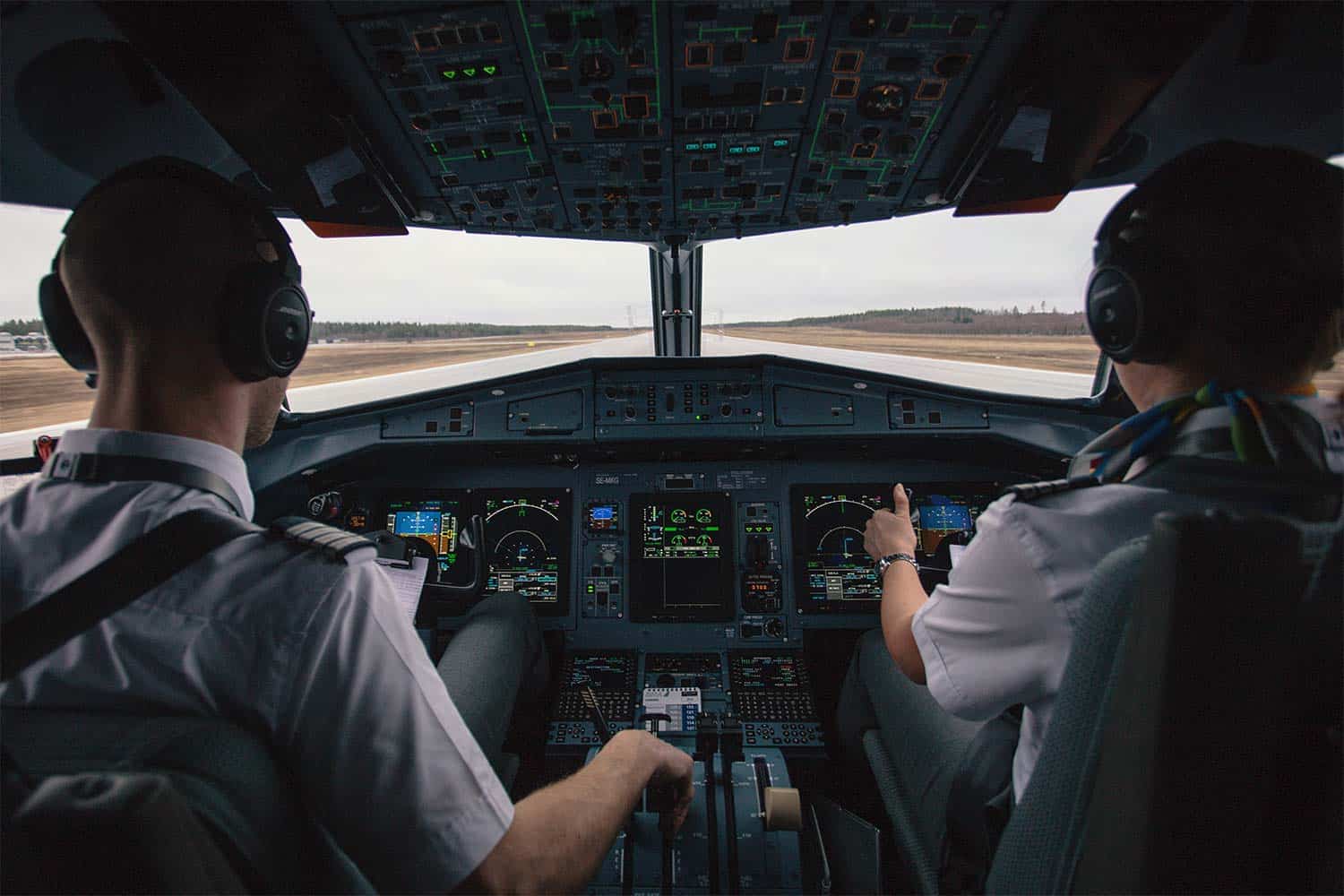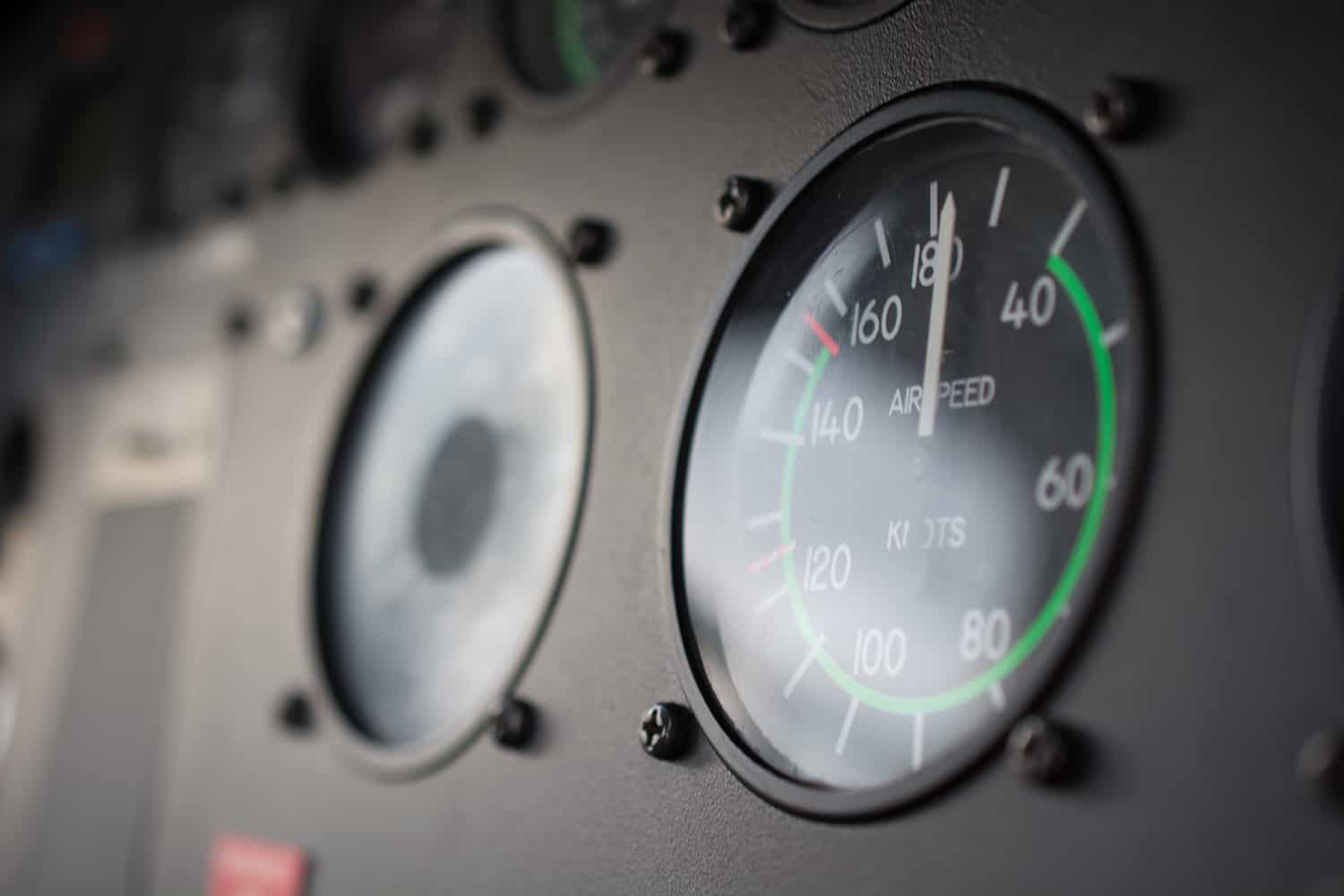Table of Contents
*This post may contain affiliate links. As an Amazon Associate we earn from qualifying purchases.
Imagine flying around the world and being paid for it. What profession could be better?
If you don’t want the hassle of dealing with passengers as hostesses do, then the best option is to become a pilot. Many people dream about flying a plane but getting into the cockpit requires a tremendous amount of effort.
Not only do pilots need a lot of experience, but they also have to have almost perfect health.
Two important things you’ll need:
Acquiring the funds to get a pilot’s license and the required flying time is one of the most challenging aspects that aspiring pilots face.
Although the fantasy of controlling a massive flying machine might seem alluring, wanna-be pilots face numerous challenges on the path to becoming licensed.
To help novice pilots plan their journey of acquiring a license, we compiled the most important aspects that they will have to overcome to make their dreams come true.
Find Out If You Want To Do It
Novice pilots are eager to get into the cockpit so that they can begin their training to fly. Before they can even enroll in a training program, they have to take an Admissions Flight.
Why is it important?
This is a great way for the novice pilot to be sure that they want to undergo the training, as the Admissions Flight shows them the first-hand training that they will encounter, the aircraft and to see what it’s like to be behind the controls.
Once they’ve gone through the Admissions Flight and decided the training is worth their while, every student must apply for FAA Medical Certificate.
Recreational pilots have to meet the basic medical requirements. Novice pilots who want to fly professionally have to meet even higher medical standards and have to apply for a medical certificate through Aviation Medical Examiner (AME). (1)
An FAA-designated Aviation Medical Examiner has to examine you in order for you to get a medical certificate. Don’t think that you can’t be a pilot because you wear glasses or contact lenses. All that matters is your vision is corrected to 20/20.
Once you’ve met the required medical standards, AME will issue a medical certificate.
What Licenses Are Required?
The important thing to figure out regarding a license is the type of pilot you want to be.
A private pilot certificate enables one to operate an aircraft for personal use. They can transport an unlimited number of passengers and have to fly below 18,000 feet but can’t be paid for their service. A commercial pilot certificate enables you to be a professional pilot who gets paid to do things like air tours, rescue operations and to take aerial photos. (2)
Becoming an airline pilot:
An airline pilot is what most novice pilots want to become. These pilots fly cargo and passengers. Generally, pilots start out as commercial pilots and become airline pilots. To do that, they have to acquire the Airline Transport Pilot (ATP) certificate, sometimes referred to as the Airline Transport Pilot License.
Getting the ATP is no easy task, as the novice pilot will have to accumulate 1,500 hours of flight time and has to be at least 23 years old. The other route is to pursue a Restricted-ATP (R-ATP), which allows the pilot to serve as an airline first officer before acquiring the 1,500 hours of flight time. The R-ATP allows novice pilots of 21 years of age or older. (3)
More licences….
Pilots also have to pass the Airline Transport Pilot Certification Training Program (ATP-CTP) to be eligible to take the knowledge exam. You need to get at least 70% to pass the ATP Multiengine Airplane written knowledge test.

After you pass that, you’ve got five years to complete the checkride, which consists of an oral exam and flight components.
Another step that’s required if you want to fly through clouds, fog and rain is learning to navigate using your cockpit instruments. That requires the pilot to get an instrument rating, which is essential if you want to be an airline pilot.
Skills You’ll Acquire
Besides learning how to operate a big flying machine, pilots also improve characteristics such as their confidence, ability to multitask, time management and problem-solving.
Getting to know the instrument panel is one of the first things that novice pilots will learn. The most basic instruments that they will learn is the Airspeed Indicator – measures the airflow around the plane when in flight.

The Altitude Indicator shows the position of the plane in relation to the horizon. The altimeter displays the plane’s altitude in relation to sea level. The Vertical Speed Indicator measures the speed when the plane is vertical to the ground.
The Heading Indicator shows the compass view of the plane, and the Turn Coordinator shows the bank, tilt or turn of the wings. (4)
These instruments are important to know as they are a big part of navigating the plane.
What else is involved in plane navigation?
Radio navigation aids (NAVAIDS) help the pilot in low visibility conditions and act as a backup method for aviation pilots that prefer dead reckoning – use of visual checkpoints combined with distance calculations and time. Some of the radio NAVAIDS are ADF/NDB and Instrument Landing System.
The other and more popular method is the global positioning system (GPS). It’s the most common NAVAIDS used today since it provides accuracy and ease of use. Pilots will make use of iPads if their standard GPS fails.
Another option for navigation is the Inertial Reference System, which tracks the plane’s positioning by using accelerometers and gyroscopes. (5)
Who knew that the sky has a highway? Jet routes are published routes (highways in the sky), which pilots use for commercial flights around the U.S. These jet routes are available at altitudes above 18,000 feet. (6)
Speaking The Lingo
Learning to become a pilot requires one to know the terms associated with aviation. So what are the common terms that pilots will need to know?
Adverse yaw is when the plane’s nose turns away from the direction of the turn. Airfoil is a shape of a surface such as a blade or a wing. Annual inspection is a nose-to-tail inspection of the plane every twelve months. Chord line is an imaginary line on an airfoil from the leading to the trailing edge.
These are also important:

Deadstick means forced landing. Final approach is the path that leads toward the landing runway. Level flight is a maneuver that ensures the plane remains at the same altitude.
PItch is the motion on a plane’s lateral axis. Soft field is the unpaid airport runway that’s grass or dirt. Threshold is the portion of a runway that’s available for landing. (7)
Parts Of A Plane
The main parts that a novice pilot will learn include the fuselage, wings, empennage, powerplant, landing gear and aircraft frames.
Fuselage is located centrally on a plane and is the main part. While it includes the cockpit, the fuselage is the component where baggage and passengers held to, as well as to which the empennage and the wings are attached.

Wings are attached to both sides of the fuselage and are the source of the lift for the aircraft.
Empennage consists of the vertical and horizontal stabilizers. It’s the tail section of the plane.
Make sure you’re familiar with the following:
The powerplant consists of the engines, electrical system and a propeller. It can be found at the front of the aircraft fuselage or toward the rear. The landing gear consists of wheels and struts. Some planes have skis or floats to land on either snow or water.
An aircraft’s frame can be made from different materials and methods. Some of those include monocoque, truss, semi-monocoque and composite material.
Other parts that a novice pilot will learn include the hydraulic system, anti-icing system and the carburetor system. (8)
Ever wondered how pilots communicate with air traffic controllers?
Pilots use Aircraft Communications Addressing and Reporting System to communicate with ground control and Air Traffic Control. These communication parties provide the pilot a printed flight plan, which details the listed route, as well as changes listed to the originally filed flight plan.
Is It All Worth It?
Considering that novice pilots have to fly for many hours and pass numerous tests to get their license, is it worth the trouble?
Onto the money…
If you love to fly, then it is. The other perk of getting an ATP certificate is that airlines pay their pilots well. At least, most do. The median annual salary of a commercial airline pilot in 2018 was $130,059. Some made as little as $62,000 while others averaged $143,000. (9)
Even if you’re not planning to make a career in aviation, getting a license to fly a plane could benefit you if you decide to buy one. You can fly it, as opposed to hiring a pilot and paying him a lot of money to do it for you.
Pilots who enroll full-time for their training can complete everything within around 14 months. Most university degrees take 3 or 4 years to complete, and some qualifications won’t pay as much as an airline pilot gets.
The training and the exams to qualify as a professional pilot are cheap. Pilots who want to fly for airlines will have to pay an average $100,000 to get their license.
Getting your pilot license could be your ticket to flying around the world and making good money.
References
- https://atpflightschool.com/faqs/how-to-become-a-pilot.html
- https://www.trade-schools.net/articles/become-a-pilot.asp
- https://studentpilotnews.com/2019/03/11/pilots-guide-to-atp-certification/
- https://www.wccaviation.com/the-first-six-the-basic-instruments-pilots-use-when-flying/
- https://www.flightdeckfriend.com/ask-a-captain/how-do-commercial-aircraft-navigate/
- https://thepointsguy.com/guides/how-airplanes-navigate/
- https://www.aircharterservice.com/about-us/news-features/blog/an-a-z-of-aviation-definitions
- https://www.thebalancecareers.com/aircraft-structure-and-components-282576
- https://work.chron.com/average-commercial-airline-pilots-salary-11855.html

Share this Image On Your Site
<p><strong>Please include attribution to https://taketotheair.com with this graphic.</strong><br /><br /><a href=’https://taketotheair.com/novice-piloting-guide’><img src=’https://taketotheair.com/wp-content/uploads/2019/09/How-to-Fly-Like-a-Pro.jpg’ alt=” width=’846px’ border=’0′ /></a></p>

